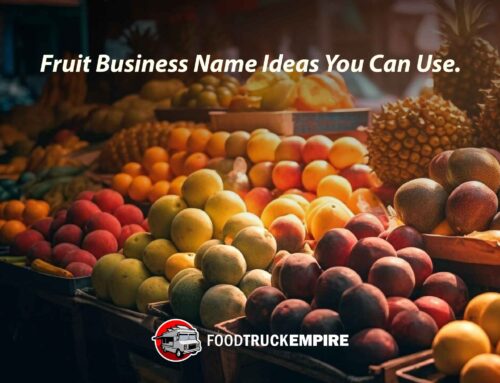Do you want to increase your online sales for your food business? How about sell to millions of customers instead of being limited to buyers in your small town?
That’s the power of the internet.
Online shopping is an enormous industry. Just look at the sale of groceries online – it’s a $27 billion market. Wouldn’t it be nice to have a sliver of that pie? Yep – you and me both.

Meet the fastest way to rehydrate.
There’s one problem: building your online business is tough. There is a pretty steep learning curve and there are so many opportunities it can lead to analysis paralysis pretty quickly. You could start an e-commerce store, sell on Amazon, market on social media, through email or text messaging. The list of things you need to master to become successful can seem endless.
On the bright side, food founders only need a hit on one these online sales channels to transform a small food business into a profitable venture. Over the last few years, many solutions have popped up to help increase your sales to consumers from coast to coast and make accepting online sales less of a technical hurdle than it once was.
Below, I’ve described a few avenues you can take to increase your online food sales. Some are more expensive than others, but none are out of reach. Let’s take a look at your options:
1. Your own online store

Pros:
- Another revenue channel – it’s great to sell direct to consumers, isn’t it?
- Nationwide market – customers from all over can order you product
- Meet customers – interact directly with customers to learn how they use your product.
- Inexpensive: many online stores are free or just a couple bucks a month.
Cons:
- Time – it takes a while to pack up the order and ship it out
- Money – it’ll cost you a couple hundred bucks to get boxes and such
- Maintenance – keeping track of inventory and making sure your store doesn’t crash
- Shipping – Depending on what you plan to sell the cost to ship the product could be significant.
If you want to sell a food product that’s designed for e-commerce consider the following: condiments, spices, peanut butter, bars, jerky, canned goods, snacks and candy to name a few. Why? Because generally speaking these products maintain freshness and are lightweight. That means you’ll spend less to ship your product nationally.
One example of these characteristics in action is found in our interview with Hydrant. This company sells flavored water infused nutrients for improved hydration. These little flavored water packets are extremely low-cost to ship to customers due to their low weight. This appealing attribute is one reason the company has been able to increase sales from $40k to $2 million in only two years.
2. Monthly subscription boxes
Subscription boxes and meal kits are all the rage. There’s monthly this and monthly that. You can’t keep it straight! Getting your product into a monthly tasting box is a great way to expose your product to thousands of customers. Here are a few things to consider before entering this $5 billion dollar market:
Pros:
- Growing market – Tons of people try (and hopefully subscribe) to your product. This is a growing segment of the food market.
- Subscription model – If you can build a base of customers that pay you each month for a service, it can be an extremely lucrative business.
- New customers – Chance to break out of your hometown and sell your meals nationally.
Cons:
- Expensive – all those small samples, discount codes, and free shipping you provide adds up.
- Spotty ROI – you may not make your money back in the beginning.
- High turnover – these companies often have high cancellation rates. It’s not just about acquiring a customer, it’s about keeping them for many months.
- Keeping things fresh – If you start a monthly meal kit business, you’ll need to continue finding exciting and cost effective meals to keep your customers happy.
If you’re interested in this opportunity take a look at our case study with MealPro. This is an 11-employee healthy meal company with over 5,000 customers. The founder of the company Andy Santori shares the importance of coming up with a distinct brand message to promote the service on social media in addition to the logistic challenges of running this business.
3. Sell on Square
If you already use Square to make mobile payments at markets, fairs, and festivals, it’s a natural extension of your company to start accepting online sales.
Pros:
- Trusted – Square is a reputable company handles millions of customer transactions per year for small businesses.
- Simple setup – If you already use Square, you’ll have a store in just minutes.
- Inexpensive – same with the credit card fees, Square charges 2.75% of the sale. No monthly fees. Now, that’s awesome.
Cons:
- Limited branding – There’s a bit less flexibility in branding than other custom options. With that being said, most small food businesses don’t need anything more powerful than this.
- Limited layouts – There are some limitation here, but the ease of use and setup make it a fair trade off for most sellers.
4. Online resellers
Amazon is huge. There’s no denying the power of selling on the world’s largest retail website. And there’s so many more online resellers, too. From Abe’s Market to Joyus, there’s plenty to go around.
Related Reading: The Ultimate Guide to Shipping Food Products by Mail
Pros:
- Selling to an established market – customers are already coming to the site!
- Easy setup – You only need to focus on getting quality food images, writing descriptions and setting up your listing. No need to worry about hosting or domain names because that’s all handled for you.
- Drop-shipping – You can send the inventory to an Amazon warehouse and the product will ship product when orders come in.
Cons:
- Competition – look at the number of products already on the site.
- Learning curve – It will take a little time to understand marketing on Amazon. It’s like a it’s own little world to understand.
- Less control – You won’t have as much control on Amazon as you would on your own website. Amazon can change their terms and conditions at any moment. These changes could negatively impact your business.
- Sales pressure – if your product doesn’t sell, you might be dropped from the site
5. Gift basket companies
After being approached by several gift basket companies locally, this doesn’t seem like a bad idea. After all people don’t mind shelling out money for unique gifts and there’s the opportunity to charge a premium price for quality products. Here’s a look at some pros and cons for our final way to sell online:
Pros:
- Less work – Organize a standard set of baskets and you sell the product. You don’t need to manufacture everything in the basket yourself.
- It’s always busy season – Gift giving is year-round. There’s Christmas, Thanksgiving, Fathers Day, birthdays and more.
- Partnerships – If you can develop a relationship with a small business owner or acquire a corporate account, you can enjoy consistent sales year after year.
Cons:
- Shipping – Large gift baskets can become expensive to ship domestically or internationally.
- Margins – They may suffer on smaller-sized product.
- Keeping it fresh – You’ll need to continually update your gift baskets each year. You’ll also need to develop specialty gift baskets for holidays like Valentines Day.
Selling online can be a fruitful endeavor for your food business. Whether you select one or all five of these ways to sell your food product online, you can be successful. After all, it’s another sales channel for your business.
How have you fared selling online? Am I missing any pros and cons or ways to sell? Let me know by leaving a comment below. If you’re serious about opening an online store be sure to join our food business community. Each week we share a new case study with a different entrepreneur.








